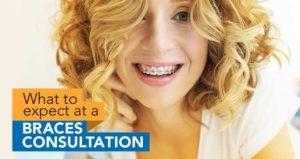Rumored Buzz on Legacy Orthodontics
Rumored Buzz on Legacy Orthodontics
Blog Article
Legacy Orthodontics Fundamentals Explained
Table of ContentsFacts About Legacy Orthodontics UncoveredSome Ideas on Legacy Orthodontics You Need To KnowLittle Known Facts About Legacy Orthodontics.The Definitive Guide for Legacy OrthodonticsSome Of Legacy Orthodontics
At Advanced Orthodontics, we offer individuals with a alternative treatment experience. Furthermore, we offer adjustable treatment schedules, flexible repayment choices and an enjoyable, satisfying experience. leesburg braces. Telephone call ( 480) 357-4900 today to find out more and timetable a consultation.An orthodontist is a dental professional educated to detect, protect against, and deal with teeth and jaw abnormalities. Orthodontists function with individuals of all ages, from children to grownups.
Malocclusion, or misaligned teeth, can cause dental issues, consisting of tooth degeneration, gum tissue disease, and tough or painful chewing. Yet not everybody is born with straight teeth. If you have a negative bite or large spaces between your teeth, you might desire to seek advice from a dental expert focusing on orthodontic treatment.
Legacy Orthodontics Things To Know Before You Buy
( Photo Credit Scores: DigitalVision/Getty Images) Orthodontists make use of dealt with and removable oral devices, like dental braces, retainers, and bands, to transform the position of teeth in your mouth. Orthodontic therapy is for oral irregularities, including: Jagged teethBite problems, like an overbite or an underbiteCrowded teeth or teeth that are also far apartJaw misalignmentThe goal of orthodontic therapy is to improve your bite.
A healthy bite ensures you can consume, eat, and talk appropriately. While you might assume of orthodontists as mainly for kids or teens that need braces, they can remedy oral issues at any kind of age. Orthodontists attend college, oral school, and orthodontic school. After graduation, they invest 2 or 3 years in an orthodontic residency program.
All orthodontists are dentists, yet not all dental practitioners are orthodontists. Orthodontic residency programs provide extensive, focused instruction for oral specialists. They focus on two areas: How to effectively and securely move teeth How to appropriately lead growth in the teeth, jaw, and faceOnce an orthodontist has actually finished training, they have the alternative to come to be board licensed.
Not known Facts About Legacy Orthodontics
Malocclusion leads to tooth overcrowding, an irregular jaw, or uneven bite patterns. Malocclusion is typically treated with: Your orthodontist affixes metal, ceramic, or plastic square bonds to your teeth.
Some people need a headwear to help move teeth right into line with pressure from outside the mouth. A retainer is a custom tool that maintains your teeth in area.
They're most usually used on kids. They can produce additional space in the mouth without needing to pull teeth. If you have a significant underbite or overbite, you could require orthognathic surgical treatment (additionally called orthodontic surgical procedure) to extend or reduce your jaw. Orthodontists utilize cables, medical screws, or plates to sustain your jaw bone.
You might need to see an orthodontist if you have: Crowding or not adequate area for all of your teethOverbite, when your top teeth come by your base teethUnderbite, when your bottom teeth are also much forwardSpacing or problems with gapsCrossbite, which is when your top teeth fit behind your base teeth when your mouth is closedOpen bite or a vertical gap in between your front bottom and top teethMisplaced midline, when the center of your base and upper teeth don't line up Dealing with a dental malocclusion can: Make attacking, eating, investigate this site and talking easierImprove the symmetry of our face and your general appearanceEase pain from temporomandibular joint disordersDifferent your teeth and make them easier to clean up, helping prevent dental cavity or dental caries It's often a dental practitioner who first notifications misaligned teeth during a regular test.
Legacy Orthodontics Things To Know Before You Buy

Throughout your very first orthodontic appointment, you'll likely have: An oral examPhotos taken of your face and smileDental X-raysPanoramic (360 degree) X-rays of your face and headImpressions to develop mold and mildews of your teethThese tests will certainly aid your orthodontist recognize exactly how to continue with your treatment. leesburg orthodontics. An orthodontist is a dental professional that's had training to treat your teeth and jaw
Orthodontists may carry out surgery, exams,X-rays,and more to aid you achieve a more comfy, healthier smile. An orthodontist is concentrated on your bite, so something like a chipped tooth would be taken care of by a dental professional. Orthodontists are dental experts yet not all dental practitioners are orthodontists. Orthodontists are concentrated on your bite, or the means your teeth meshed, and the straightness of your teeth.
Ever asked yourself exactly how celebs always appear to have perfectly lined up teeth? The answer typically exists in the proficient hands of an orthodontist. Yet what precisely does an orthodontist do? Orthodontists are dental experts that concentrate on fixing abnormalities in the teeth and jaws. Their competence surpasses just creating a stunning smile; it includes improving your general oral wellness and feature.
Legacy Orthodontics Things To Know Before You Get This

While braces are the most commonly recognized orthodontic therapy, orthodontists have a varied toolkit at their disposal. The specific strategy picked relies on the severity of the situation, the client's age, and specific choices. These tried-and-true dental braces make use of a system of brackets bonded to the teeth and attached by cables.
Clear aligners, like Invisalign, are a popular option for clients looking for a more very discreet treatment option. These removable trays are personalized to gradually move the teeth's setting. Headwear may be utilized in combination with dental braces or aligners to apply additional targeted pressures, specifically for correcting jaw disparities. In cases of narrow jaws, palatal expanders can be utilized to create room for correct tooth placement.
Report this page